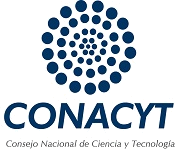2,4,6-trichlorophenol degradiation by the use of Mg/Al mixed oxides as photocatalysts
Keywords:
Photocatalysis, 2, 4, 6-trichlorophenol, Hydrotalcite, Sol-Gel, Mixed Oxides.Abstract
Chlorophenols are a group of chemical substances used in a number of industries and products. Most of these compounds released to the environment go into water. Chlorophenols are in the first two hundred places in the National Priorities List identified by the Environmental Protection Agency (EPA). Exposure to high levels of chlorophenols can cause damage to the liver and immune system. Inside the group of chlorophenols is 2,4,6-trichlorophenol, which is classified by the EPA in the B2 group as a possible carcinogen. Therefore it is urgent to find alternatives for treatment of aqueous systems contaminated with chlorophenols for its complete degradation. In this paper the employment of alternative heterogeneous photocatalysts TiO2 for degradation of 2,4,6- trichlorophenol is proposed. To this were synthesized by the sol-gel method hydrotalcites with different Mg/Al ratio, which were calcined at 500 ° C. Hydrotalcites were characterized by differential thermal analysis, X-ray diffraction, nitrogen physisorption, thermogravimetric analysis and ultraviolet diffuse reflectance spectroscopy. The catalytic activity of the calcined hydrotalcite was tested in the degradation of 2,4,6-trichlorophenol at concentrations of 100 ppm using ultraviolet radiation as light source. Calcined hydrotalcites obtains mineralize rapidly to 94.18% in less than 2 hours. Consequently it concludes that the hydrotalcites calcined at 500 ° C are photocatalytically active for degradation of 2,4,6-trichlorophenol, where its catalytic activity is associated with the origination of hydroxyl radicals formed to regenerate the structure of the hydrotalcite in the aqueous system by its memory effect.References
.J. Michalowicz, W. Duda, Polish J. Environ. Stud. 16, 347 (2007).
.W. E. Pepelkoa, D. W Gaylora, D. Mukerjee, Toxicol. Ind. Health. 21, 93 (2005).
.Ö. Aktas¸ F. Cecen, J. Hazard. Mater. 141, 769 (2007).
.A. O. Olaniran, E. O. Igbinosa, Chemosphere 83, 1297 (2011).
.M. Pera-Titus, V. García-Molina, M. A. Baños, J. Giménez, S. Esplugas, Appl. Catal. B-Environ, 47, 219 (2004).
.M. N. Chong, B. Jin, C. W. K. Chow, C. Saint, Water. Res., 44, 2997 (2010).
.X. Qu, P. J. J. Alvarez, Q. Li, Water. Res., 47, 3931 (2013).
.E. Ramos, T. Lopez, P. Bosch, M. Asomoza, R. Gomez, J. Solgel Sci. Techn. 8, 437 (1997).
.C. Gómez, G. Del Angel, F. Tzompantzi, R. Gómez, L. Torres- Martínez, J. Photochem. Photobiol. A 236, 21 (2012).
. M. Jablońska, L. Chmielarz, A. Węgrzyn, K. Góra-Marek, Z. Piwowarska, S. Witkowski, E. Bidzińska, P. Kuśtrowski, A. Wach, D. Majda, Appl. Clay Sci. 114, 273 (2015).
. E. Pérez, L. Ayala, G. Getachew, G. Fetter, P. Bosch, A. Mayoral, I. Díaz, J. Environ. Chem. Eng. 3, 1555 (2015).
}
. B. Pourabbas, B. Jamshidi, Chem. Eng. J. 138, 55 (2008).
. G. Jacome-Acatitla, F. Tzompantzi, R. Lopez-Gonzalez, C. Garcia-Mendoza, J.M. Alvaro, R. Gomez, J. Photochem. Photobiol. A 277, 82 (2014).
. F. Tzompantzi, A. Mantilla, F. Bañuelos, J. Fernández, R. Gomez, Top. Catal. 54, 257 (2011).
Downloads
Published
Issue
Section
License
©2025 by the authors; licensee SMCTSM, Mexico. This article is an open access article distributed under the terms and conditions of the Creative Commons Attribution license (http://creativecommons.org/licenses/by/4.0/).





